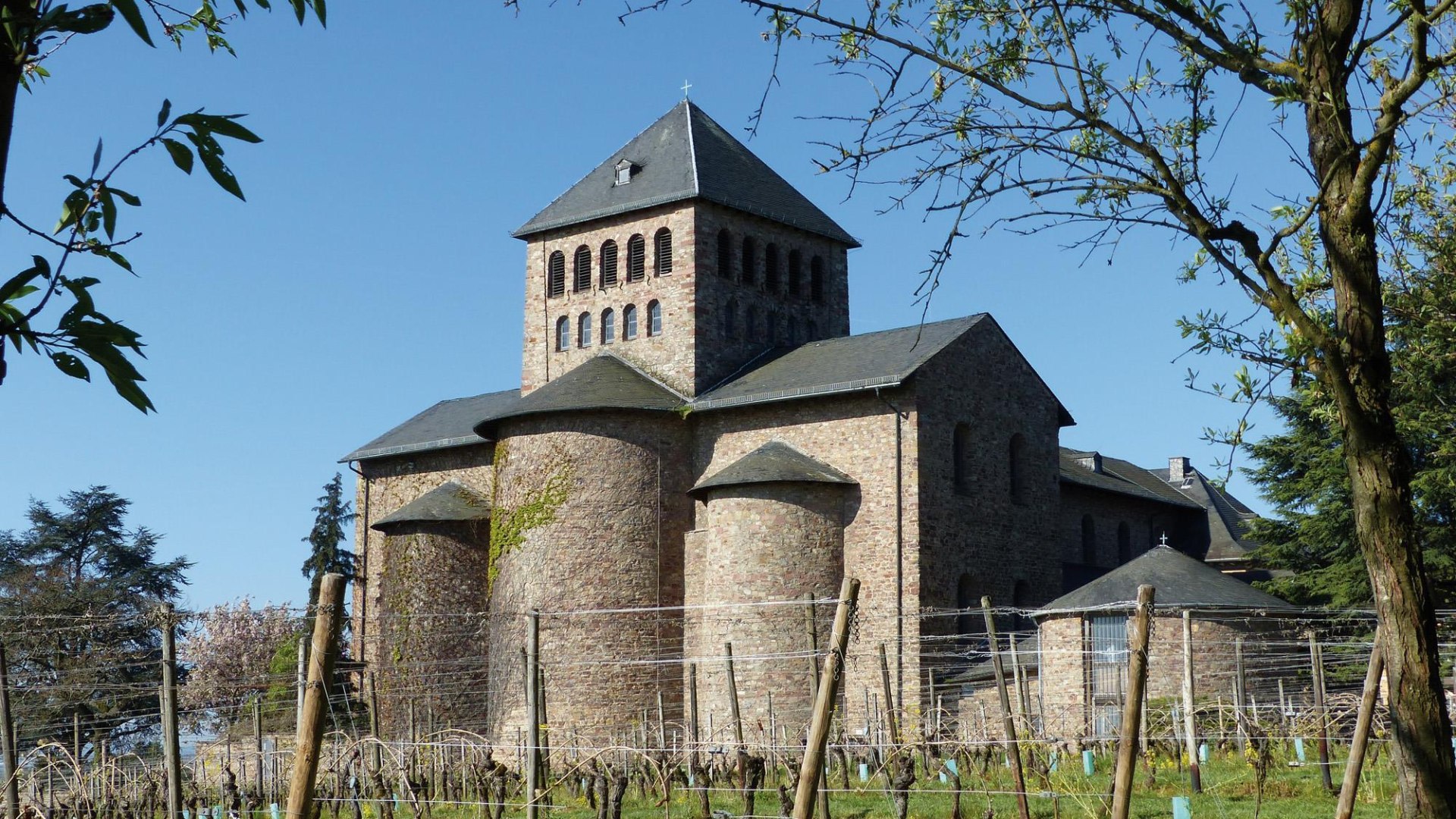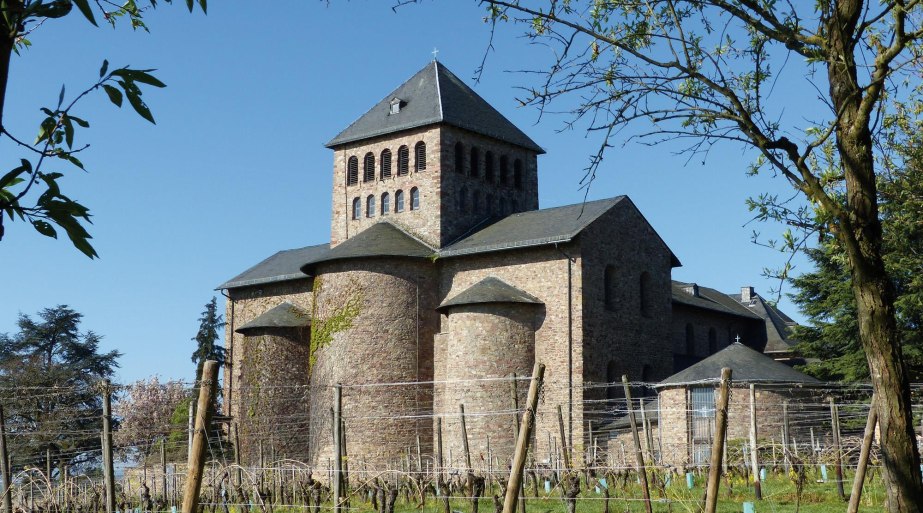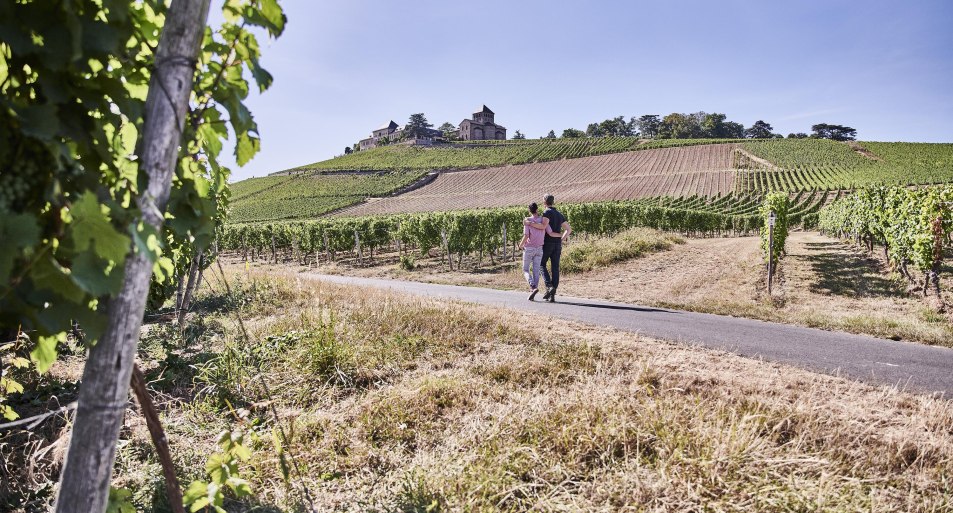Basilika Schloss Johannisberg
65366 Geisenheim-Johannisberg
Former Benedictine monastery Johannisberg
The interior of the basilica appears very sober. There are hardly any sculptures and pictures. Nevertheless, it attracts every visitor in a certain way and makes him walk through the church interior. It gives space for thoughts. Nothing distracts.
Historically, one stands here on the "Bischofsberg", because this part of the Rheingau was given to the archbishops of Mainz under Emperor Otto II in the 10th century. It was a Mainz archbishop who had a community of monks settled here around 1100 by the Abbey of St. Alban in Mainz. A little later the Benedictine monks formed an independent monastery. At this time the basilica was also built and dedicated to St. John the Baptist.
Former Benedictine monastery Johannisberg
From here you can look far into the Rheingau, if you go behind the basilica. And you can look across to the other side of the Rhine. There, directly opposite in Ingelheim, 1200 years ago - according to legend - Emperor Charlemagne looked from his palace across the Rhine and noticed that on the hill opposite the snow always melted a little earlier. He then decided to plant a vineyard here. To this day, wine grows and thrives here.
Historically, we are standing here on the "Bischofsberg", because this part of the Rheingau was given to the archbishops of Mainz under Emperor Otto II in the 10th century. It was a Mainz archbishop who had a community of monks settled here around 1100 by the Abbey of St. Alban in Mainz. A little later the Benedictine monks formed an independent monastery. At this time the basilica was built and dedicated to St. John the Baptist. The present name of the village "Johannisberg" is derived from this saint. The Benedictines settled here on the hill, in contrast to the Cistercians, who tended to settle in valleys and put only modest ridge turrets on their churches (as in Eberbach).
After an initial flourishing, monastic life at this site fell into decline. After being destroyed in the Peasants' Wars, the monastery was completely abolished in 1563. In 1716 it was bought by the prince abbots of Fulda, who built a beautiful summer residence here in baroque style. The church was restored and preserved. The other buildings of the monastery were transformed into a castle. Johannisberg was thus an exclave of Fulda in the middle of Mainz territory.
After secularization, Johannisberg fell to the Orange. They received the buildings and the vineyard. In 1815 Johannisberg came to Austria through a special treaty in Vienna. Emperor Franz I gave the castle to Prince Clemens Wenzel Lothar von Metternich-Winneburg. After the last descendants died with Tatjana von Metternich in 2006, the castle changed hands and has been in the hands of the Oetker family ever since. The Benedictine monastery at that time was always also responsible for pastoral care. Therefore, the monastery church was also the church of the local community, which it has remained to this day. The present church is in parts a post-war reconstruction. The church and castle were heavily destroyed in a bombing raid in 1942.



